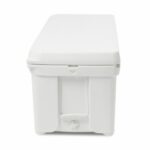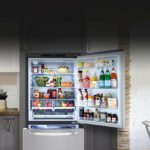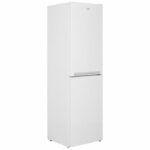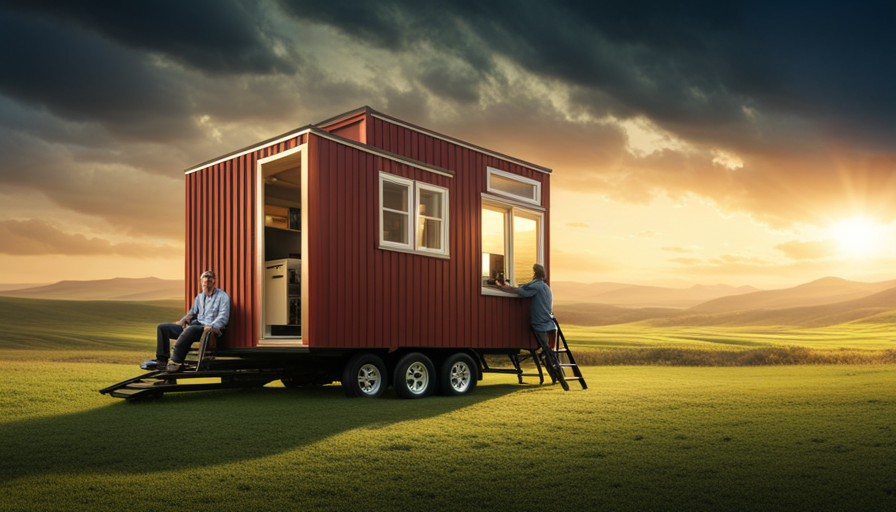Coolers and Freezers
Are Coolers Airtight?
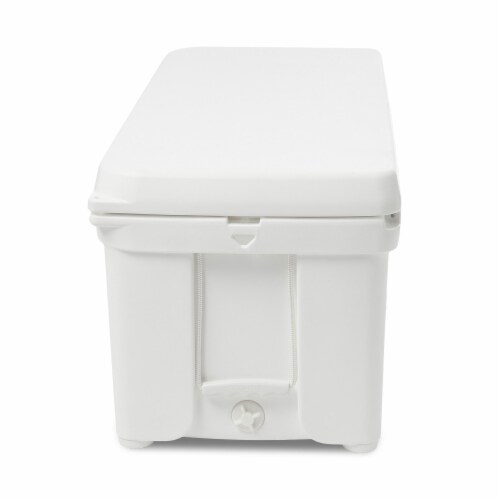

Dry ice
Using dry ice in ice chests is excellent for maintaining low temperatures. It’s effective to lay a layer of dry ice a few inches thick at the top of the chest. This method traps the cold air, preventing it from escaping upwards and thus ensuring that items even at the bottom stay chilled. In the absence of dry ice, newspapers or similar materials can be utilized to insulate the ice chest.
Before you put any food in a cooler, make sure you have pre-frozen it. This will keep it from thawing and making the food in the cooler spoiled. To prevent perishables from thawing, you can wrap them in newspaper.
Insulation
Insulated coolers are small containers that are lined with insulation to keep cold food cold. There are many different styles and designs available. Some are made of reinforced styrofoam while others use plug in technology to draw electricity from your generator or car. Some coolers will come with ice packs.
Insulated coolers will keep out as much heat possible. Styrofoam is a common type of insulation found in coolers. It is inexpensive and can be cut to exact measurements. They are then covered with plastic molds to protect the insulation from water damage. Some cheaper models are blow molded and use polypropylene and HDPE plastic. Some of these are BPA free. The cheaper versions, however, do not have any insulation in the lid, and usually have a cavity for air. These coolers are less effective at keeping drinks chilled than the more expensive models.
Ice
If you’re going to use an ice cooler to keep beverages cold, it’s essential to get one that’s airtight. While most commercial coolers are airtight, that doesn’t mean that they can’t be affected by the air outside. In fact, they can be cooled much more effectively if the air outside is kept out.
Although an ice cooler can be sealed, it is still important to vent it. This is because carbon dioxide can buildup in enclosed spaces and accumulate in lower places. Fortunately, most quality coolers are designed to be as airtight as possible, and they usually feature thick insulation to keep contents cold.
Ventilation
Proper ventilation is critical to the successful operation of a cooler. A lack of ventilation can cause a number of issues, from excessive humidity to loading issues. It can also be difficult to justify the cost of ventilation in a cooler. In addition, local authorities may require that refrigeration systems include ventilation.
There are many ways to ventilate coolers. One method is to measure CO2 levels, and then to adjust the ventilation to maintain the level above the ambient concentration. This approach may not be compatible with the current code requirements but it may be acceptable in some jurisdictions.
Ice pack
A cooler can be equipped with an ice pack to keep food and beverages cold. Most of these packs come with a lid to protect them from water. A leaky icepack can cause damage to the contents. A leaky ice pack can be repaired by using a wet cloth to wipe away any excess liquid.
Ice packs come in many sizes and are tailored to specific purposes. There are thin ice packs that fit in a lunchbox and ice packs that can freeze quickly and hold their coldness for a long time. To find the right one for you, make sure to carefully read the product description. For example, some only guarantee a freeze time of four to six hours, while others can keep items frozen for up to 24 hours.
Hi, I’m Emma. I’m the Editor in Chief of Tiny House 43, a blog all about tiny houses. While tree houses are often associated with childhood, they can be the perfect adult retreat. They offer a cozy space to relax and unwind, surrounded by nature. And since they’re typically built on stilts or raised platforms, they offer stunning views that traditional homes simply can’t match. If you’re looking for a unique and romantic getaway, a tree house tiny house might just be the perfect option.
Coolers and Freezers
Are Coolers Airtight?


Dry ice
Utilizing dry ice in coolers is an excellent method for maintaining a cool temperature. Add a layer of dry ice, about a few inches thick, on top of the items in your cooler. This strategy helps in trapping the cold air inside, preventing it from escaping, and ensures that even items at the bottom stay cold. If you’re out of dry ice, consider lining your cooler with newspapers or similar materials as an alternative solution.
Before you put any food in a cooler, make sure you have pre-frozen it. This will prevent the cooler from becoming spoiled by thawing. To prevent perishables from thawing, you can wrap them in newspaper.
Insulation
Insulated coolers are small containers that are lined with insulation to keep cold food cold. There are many different styles and designs available. Some are made of reinforced styrofoam while others use plug in technology to draw electricity from your generator or car. Some coolers will come with ice packs.
Insulated coolers will keep out as much heat possible. Styrofoam is a common type of insulation found in coolers. It is inexpensive and can be cut to exact measurements. They are then covered with plastic molds to protect the insulation from water damage. Some cheaper models are blow molded and use polypropylene and HDPE plastic. These models are BPA-free. The lower-end versions have no insulation and have a space for air. These coolers are less effective at keeping drinks chilled than the more expensive models.
Ice
It is essential that you get an ice-cooler that is airtight if you plan to keep drinks cold. Although most commercial coolers are sealed, this doesn’t mean they can’t be influenced by the outside air. They can actually be cooled more efficiently if the outside air is kept out.
You can get an ice cooler that’s airtight, but you might still want to make sure it’s vented. This is because carbon dioxide can build up in sealed, enclosed spaces and accumulate in lower areas. Most coolers are made to be as leak-proof as possible and have thick insulation to keep the contents cool.
Ventilation
Proper ventilation is critical to the successful operation of a cooler. Lack of ventilation can lead to a variety of problems, including excessive humidity and loading issues. It can also be difficult to justify the cost of ventilation in a cooler. Local authorities may also require that refrigeration systems include ventilation.
There are many ways to ventilate coolers. One way is to measure CO2 levels and modulate the ventilation to keep the level above the ambient concentration. While this approach will not meet the current code requirements, it may be acceptable in many jurisdictions.
Ice pack
A cooler can be equipped with an ice pack to keep food and beverages cold. These packs are usually equipped with a lid to protect from water. A leaky icepack can cause damage to the contents. You can repair a leaky icepack by using a damp cloth to remove any liquid.
Ice packs are available in many different sizes, and they are designed for specific purposes. There are thin ice packs that fit in a lunchbox and ice packs that can freeze quickly and hold their coldness for a long time. Make sure to read the product description carefully to find the right one for your needs. Some products only guarantee a freeze temperature of 4 to 6 hours, while others can keep your items frozen for up 24 hours.
Hi, I’m Emma. I’m the Editor in Chief of Tiny House 43, a blog all about tiny houses. While tree houses are often associated with childhood, they can be the perfect adult retreat. They offer a cozy space to relax and unwind, surrounded by nature. And since they’re typically built on stilts or raised platforms, they offer stunning views that traditional homes simply can’t match. If you’re looking for a unique and romantic getaway, a tree house tiny house might just be the perfect option.
Coolers and Freezers
Are Freezers Airtight?
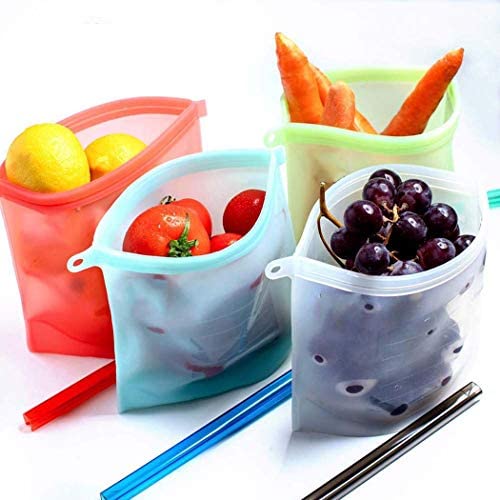

If you’re in the market for a freezer, you might be curious about whether they are completely sealed off from air. There are several factors to take into account before you finalize your decision. In this piece, we will talk about why air gaps, a dual locking system, and lids that are simple to locate matter. Understanding these aspects will assist you in selecting the freezer that meets your requirements.
Air pockets
If you’re looking for a freezer that can keep food fresh for long periods of time, you should consider airtightness. You should ensure that your freezer is sealed properly. Also, make sure to separate the food. This will allow each component to cool at different rates. Another tip is to pack ingredients with different shapes and sizes. This way, you can avoid air pockets that can degrade the quality of your food.
Double locking mechanism
To prevent unauthorised access to the refrigerator’s interior, a double locking mechanism is used in freezers. It consists of a handle and a deadbolt mounted on the door handle assembly. The deadbolt is secured in place by means of a deadlock cylinder that slides upon two parallel rails. The door handles are usually equipped with a manual push bar to unlock the doors.
It is important to select a lock that offers the right level of security. Many people get distracted by the look of a lock and end up choosing one that doesn’t fit their needs. For example, a standard lock may be okay for a childproof fridge, but for an adult who is prone to snooping, a combination lock may be more suitable.
Easy-to-find lids
These freezer lids are easy to find and are great for organizing your freezer. They snap onto the bottom of the container to keep the contents safe and secure. These lids can be used in the dishwasher, microwave, or freezer. However, you should take care when washing these plastic containers, as they can pick up light food stains.
Easy-find freezer lids are available in a wide range of sizes, from the smallest half-cup to the largest seven-cup container. Each lid is airtight to prevent condensation and spills from ruining food. These lids are also lightweight and easy-to-transport.
Stainless steel
A stainless steel freezer is a leak-proof, airtight storage option. They are non-toxic and free from chemicals so you can be certain that your food is safe. They are durable and easy to clean, and they are safe for use on both gas and induction stoves. They can also be washed.
Aluminum foil
The use of aluminum foil in freezers is important because it helps protect food from freezer burn. When food comes into contact with air, it begins to dehydrate and changes in flavor and smell. Aluminum foil is an affordable and effective way to preserve food freshness and safety. It is also moisture and crack-resistant.
Aluminum foil can be used to preserve food and also provides many other benefits such as the ability to keep food safe for long periods of time without electricity. Aluminum foil is a good heat reflector and prevents food from overheating.
Hi, I’m Emma. I’m the Editor in Chief of Tiny House 43, a blog all about tiny houses. While tree houses are often associated with childhood, they can be the perfect adult retreat. They offer a cozy space to relax and unwind, surrounded by nature. And since they’re typically built on stilts or raised platforms, they offer stunning views that traditional homes simply can’t match. If you’re looking for a unique and romantic getaway, a tree house tiny house might just be the perfect option.
Coolers and Freezers
Are Freezers Frost Free?
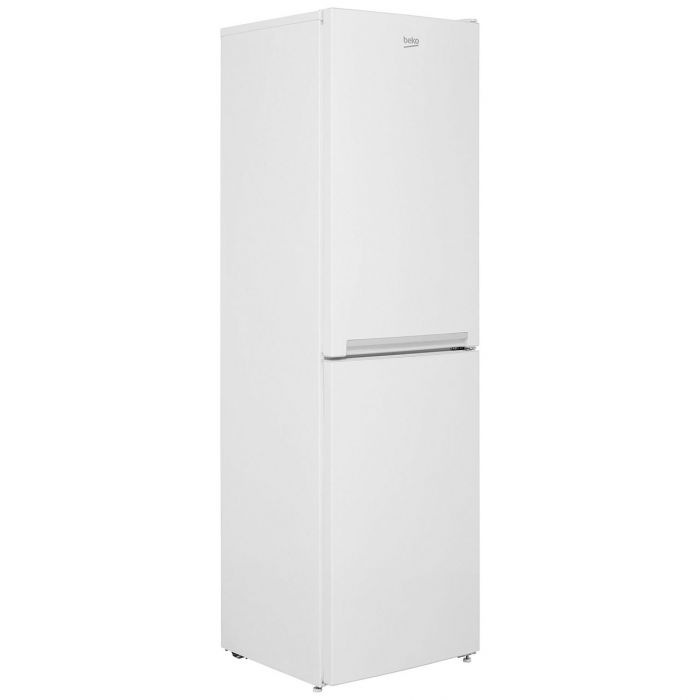

A no-frost freezer is designed not to build up ice, eliminating the need for manual defrosting. This feature simplifies maintenance compared to regular freezers. Instead of defrosting manually, which with conventional freezers can take a full day, frost-free models employ intermittent warming cycles to keep ice at bay. They also demand minimal cleaning efforts. Annually cleaning the interior space with baking soda is sufficient to remove any smells or spills.
Manual defrost freezers are quieter
Manual defrost freezers have two advantages: they are quieter and use less energy than their self-defrosting counterparts. A manual defrost freezer is more economical, too, as it does not use any heating elements. These models also have a higher energy rating – Energy Star – indicating that they are 10 percent more energy-efficient than the federal minimum standard. They both can be installed in the same way, though they do require different installation schemes.
Although manual defrost freezers tend to be quieter than self, you should still expect some noises. While a manual-defrost freezer can make some noises during defrosting, it is less disruptive than a noisy self–defrosting freezer. Read reviews to find manual freezers that are less noisy than self-defrosting ones.
Upright and chest freezers are frost free
It is important to check whether the freezer is frost-free when choosing a freezer. Freezing without frost is usually more expensive than manual defrosting. The size and features of the freezer also affect the cost. A 12.8 cubic foot chest freezer from the Galaxy brand is $579, while a Summit model costs $2,830.
While frost free chest freezers typically cost more than upright freezers, they are also more energy efficient. They use less energy than upright freezers because they have sidewall insulation. Additionally, they can keep frozen contents for up to two to three days without the use of electricity. Consumers Research recommends that freezers be compared based on their Energy Star ratings. These ratings will give information about how much energy the freezer uses and how much it will cost to run.
They need to be heated periodically to keep them above freezing
Freost-free freezers are required if you want to preserve your food and freeze ice. This type of freezer uses a system of coils to circulate cold air throughout the interior space. This system also absorbs heat from the interior and transfers it to the exterior.
The thermostat is usually built into your freezer and can be adjusted to maintain the right temperature. It should be set between -18 and 0 degrees Celsius. It could be a problem with the thermostat or gasket.
They consume less energy
To cut energy bills, you can opt for a frost free freezer. This freezer is more efficient than manual defrosting ones. Before buying a frost-free freezer, it is important to understand the benefits and drawbacks. The most obvious benefit is that it uses less energy.
First, a freezer that is frost-free will not require defrosting. Traditional freezers need to be defrosted every year or so, and it may take a full 24 hours to complete the process. However, a frost free freezer does not require defrosting and cleaning, as they are built to prevent frost buildup. You can also clean the storage space once a year with baking soda. This will remove any odors or spills from the freezer.
Hi, I’m Emma. I’m the Editor in Chief of Tiny House 43, a blog all about tiny houses. While tree houses are often associated with childhood, they can be the perfect adult retreat. They offer a cozy space to relax and unwind, surrounded by nature. And since they’re typically built on stilts or raised platforms, they offer stunning views that traditional homes simply can’t match. If you’re looking for a unique and romantic getaway, a tree house tiny house might just be the perfect option.
-

 Beginners Guides2 months ago
Beginners Guides2 months agoHow To Buy A Tesla Tiny House
-

 Energy Efficiency2 weeks ago
Energy Efficiency2 weeks agoBest Tiny Homes For Cold Climates
-

 Beginners Guides2 months ago
Beginners Guides2 months agoTiny House Nation Where Are They Now Stephanie
-

 Tiny House Resources (e.g., legalities, cost, insurance, FAQs)4 weeks ago
Tiny House Resources (e.g., legalities, cost, insurance, FAQs)4 weeks agoDo Tiny Homes Need Planning Permission?
-

 Beginners Guides2 months ago
Beginners Guides2 months agoFrom The Show Tiny House Nation How Many Keep Their Tiny House?
-

 Beginners Guides4 weeks ago
Beginners Guides4 weeks agoUsing a Climbing Net For Treehouse Construction
-

 Beginners Guides4 weeks ago
Beginners Guides4 weeks agoHow to Build a Treehouse Without Drilling Into the Tree
-

 Beginners Guides2 months ago
Beginners Guides2 months agoTiny House Nation Who Pays For The Houses


